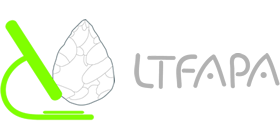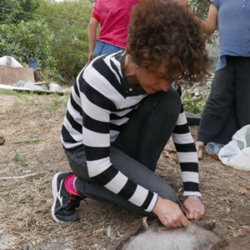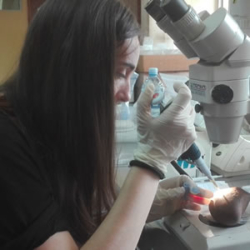Our Team
The Team of LTFAPA laboratory is made up of young scholars engaged in various research that apply traces ad residues analyses to chipped stone tools, macro-lithic tools, pottery, osseous artefacts, metal artefacts.
Cristina Lemorini
LTFAPA Laboratory leader; Use-wear analysis; Residues analysis; Experimental Archaeology
Isabella Caricola
Chipped Stone Tools, Macro-lithic tools, Metal; Use-wear analysis; Residues analysis: Experimental Archaeology
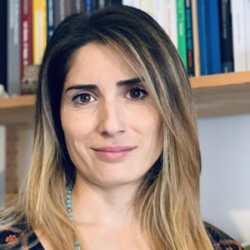
Vanessa Forte
Ceramic; Technological Analysis; Residues Analysis; Experimental Archaeology
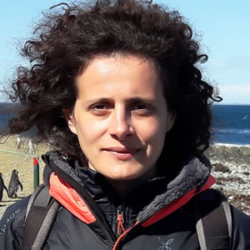
Antonella De Angelis
Macro-lithic tools; Use-wear analysis; Experimental Archaeology

Flavia Marinelli
Chipped Stone Tools; Use-wear analysis; Residues analysis; Experimental Archaeology
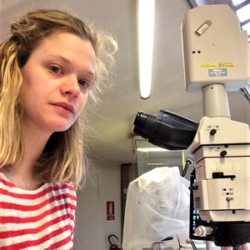
Anda Petrovic
Chipped Stone Tools; Use-wear analysis; Experimental Archaeology
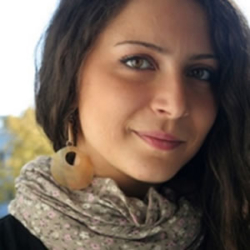
Francesca Coletti
Textile; Residues Analysis; Experimental Archaeology
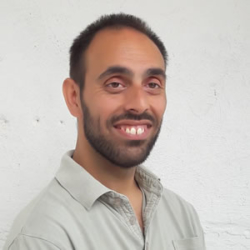
Sergio Taranto
Ceramic; Use-wear analysis; Residues analysis; Experimental Archaeology
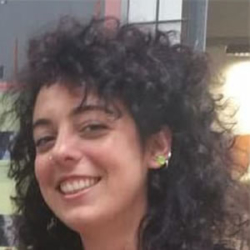
Sara Stellacci
Osseous Objects; Technological Analysis; Use-Wear Analysis; Experimental Archaeology
Alessio Pellegrini
Experimental Archaeology and metallurgy. Focus on use-wear and technological analysis of metal artifacts. Special interest for bronze.
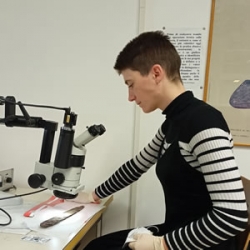
Veronica Testolini
Experimental Archaeology, Technological analysis , Metal, Ceramic analysis
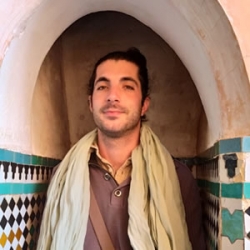
Olivier Scancarello
Chipped Stone Tools; Taphonomy; Experimental Archaeology
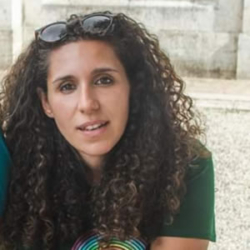
Giulia Previti
Ceramic; Stones; Technological Analysis; Experimental Archaeology; Archaeological Diagnostics
Cristina Lemorini
LTFAPA Laboratory leader; Use-wear analysis; Residues analysis; Experimental Archaeology
Associate Professor Faculty of Arts and Humanities / Department of Classics, Sapienza University of Rome, Italy.
https://orcid.org/0000-0002-6998-1615
I teach Experimental Archaeology for BA and MA in Archaeology (Faculty of Arts and Humanities) and for MA in Science and Technology for the Conservation of Cultural Heritage (Faculty of Mathematical, Physical and Natural Sciences). I founded and I direct LTFAPA Lab. part of the Excellence Centres DTC Lazio https://dtclazio.it/.
1988 Master in Archaeology, Sapienza University; 1997 PhD in Archaeology, Leiden University. From 2022 I am President of the AWRANA Association (Association of Archaeological Wear and Residues Analysts). From my MA I started to specialize in use-wear analysis and experimental archaeology with the aim to study technology in Prehistory to infer human culture in the past. Thus, my research goals are the investigation of human evolution through lithic tools and the study of technology and, as a consistent extension of the former, the investigation of craft specialization in different raw materials during Prehistory and Historical Past.
Currently, I am leading projects regarding use-wear and residues analysis in Lower Paleolithic in Europe, Asia, and Africa. I am also leading projects in Neolithic, Copper Age and Historical contexts. My commitment for the future is to amplify the role of functional analysis in archaeology contributing to reinforce the methodological standards of use-wear and residues analyses.
Link scientifici personali:
https://orcid.org/0000-0002-6998-1615
https://uniroma1.academia.edu/cristinalemorini
https://www.researchgate.net/profile/Cristina_Lemorini
Pubblications list
https://corsidilaurea.uniroma1.it/en/users/cristinalemoriniuniroma1it
Other links:
Curriculum Vitae
exarc.net
- cristina.lemorini@uniroma1.it
- Sapienza University of Rome, Italy
Isabella Caricola
Chipped Stone Tools, Macro-lithic tools, Metal; Use-wear analysis; Residues analysis: Experimental Archaeology
Marie-Sklodowska Curie Fellow at Newcastle University, School of History, Classics and Archaeology. Marie-Curie Fellow at the University of Newcastle (UK) with a project entitled “EuroDag, The first European daggers: Function, meaning, and social significance”. EuroDag is the first ever comparative study of the function of early European stone and metal daggers, c. 3800-1500 BC. The project aims to understand how early daggers were used, for what purposes, and in which social contexts, while also exploring whether meaningful functional differences might be discerned amongst this broad class of objects based on manufacturing technology, chronology, typology, or regional distribution. Having graduated in Archaeology from Bari University (Italy), I moved to Rome for a two-year Master’s course. Subsequently, from 2013 to 2017, I set up a bespoke international collaboration between Rome-Sapienza and Paris-Sorbonne to carry out an original PhD project studying prehistoric western Mediterranean mines and ground stone tools. From 2017 to 2019, I secured 2 years post-doctoral position within the framework of the ERC “Hidden Foods” project. During the years I gained broad research experience through the examination of hundreds of prehistoric stone tools from Italy, Crete, Africa and the Levant, ranging from the Palaeolithic to the Metal Ages. I am particularly interested in the reconstruction of the socio-cultural and economic dynamics of prehistoric communities through the application of new methodologies ¬ ¬¬– micro-wear and residues analysis – in the study of material culture.
- isabellacaricola@gmail.com
Vanessa Forte
Ceramic; Technological Analysis; Residues Analysis; Experimental Archaeology
Researcher (RTDA) at Faculty of Arts and Humanities/Department of Classics, Sapienza University of Rome, Italy.
https://orcid.org/0000-0002-7499-367X
Vanessa is PI of the STeP Project (MUR-SoE 2022), which aims at investigating the skill of Neolithic potters combining archaeology and cognitive neuroscience. She obtained her BA and MA in Archaeology at Sapienza University of Rome. During this period, she began to study pottery through compositional analyses, traces analyses (technological traces and use wear) and experimental archaeology to investigate cultural behaviours and social aspects of production. In 2014 she obtained her PhD at Sapienza University of Rome with a dissertation on Copper Age ceramic assemblages from central Italy. After her PhD Vanessa was awarded a Marie Curie Fellowship (H2020) at the McDonald Institute for Archaeological Research, Cambridge University (UK). From 2020 to 2021 she was a post-doc researcher at the University of Pisa, as part of the PROCESS Project (PRIN 2017). In 2021 Vanessa was awarded a STARS StG at University of Padova where she was PI of the B-Expert Project, during which she began her collaboration with Neuroscientists to investigate ancient craftspeople skill. She currently collaborates with diverse national and international projects that led her to work on ceramic assemblages from Italy, Egypt, Iraq, Serbia and Turkey.
PUBBLICATIONS:
BOOK
Forte V. 2020. Scelte tecnologiche, expertise e aspetti sociali della produzione: una metodologia multidisciplinare applicata allo studio della ceramica eneolitica. Oxford: Archaeopress.
JOURNALS
1. Forte V, Castaneda N, Romagnoli F. 2023. From Novice to Experts: Skill Development and Knowledge Transmission in Prehistory. Journal of Archaeological Method and Theory.
2. Miniaci G., Forte V., Grajeski W., Saler C. 2022. Mud Figurines from Lahun: searching for an “archaeometric” social history. Egyptian Archaeology, 59.
3. Conati Barbaro C., Forte V., Muntoni I, Eramo G.2021. A multidisciplinary approach to the study of early Neolithic pyrotechnological structures. The case study of Portonovo (Marche, Italy), Open Archaeology.
4. Amicone S., Forte V., Berthold C., Solard B., Mirković-Marić N. 2021. Playing with fire: exploring late Neolithic ceramic pyrotechnology in the Balkans. Journal of Archaeological Science: Reports.
5. Miniaci G., Saler C., Forte V. 2020. Object biographies and human practice: launching PROCESS. Egyptian Archaeology 57: 38-39.
6. Bajeot J., Caricola I., Vinciguerra V., Medeghini L., Forte V. 2020. An integrated approach based on archaeometry, use wear analysis and experimental archaeology to investigate the function of a specific type of basin diffused in the predynastic sites of Lower Egypt (4th mill. BC), Quaternary International.
7. Forte V, Tarquini O., Botticelli M., Medeghini L. 2020. The technology of Copper Age funerary pottery from central Italy: an integrated study of compositional analyses and manufacturing traces. Archaeometry.
8. Conati Barbaro C., Forte V., Rossi A. 2020. The experimental reconstruction of an Early Neolithic underground oven of Portonovo (Italy). Exarc Journal, 1.
9. Forte V., Coletti F., Ciccarelli E., Lemorini C. 2019. The contribution of experimental archaeology in addressing the analysis of residues on spindle-whorls. EXARC Journal, 4.
10. Forte V. 2019. Skilled people or specialists? Knowledge and expertise in copper age vessels from central Italy, Journal of Anthropological Archaeology, 55.
11. Festa G., Andreani C., D’Agostino F., Forte V., Nardini M., Scherillo A., Scatigno C., Senesi R., Romano L.. 2019 Sumerian pottery technology studied through neutron diffraction and chemometrics at Abu Tbeirah (Iraq). Geosciences, 9, 74.
12. Forte V, Cesaro, S.N. and Medeghini, L., 2018. Cooking traces on Copper Age pottery from central Italy: An integrated approach comprising use wear analysis, spectroscopic analysis and experimental archaeology. Journal of Archaeological Science: Reports, 18: 121-138.
13. Forte V, Lemorini C, 2017. Traceological analysis applied to textile implements: an assessment of the method through the case study of the 1st millennium BCE ceramic tools in central Italy. Origini XL, 65-182.
14. Forte V, Medeghini L, 2017. A preliminary study of ceramic pastes in the copper age pottery production of the Rome area. Archaeological and Anthropological Sciences, 9: 209-222.
15. Forte, V, Medeghini. L., 2013. Capo Mannu Project - Analisi composizionali e scelte tecnologiche della ceramica preistorica nell'area del Capo Mannu (Oristano, Sardegna). Traces in Time, 3: 1-13.
CONFERENCE PROCEEEDINGS
16. Forte V. 2022 Use activities, wear mechanisms and residues: the use alterations variability on pottery in light of the latest research advancements. In Vukovic J, Bikic V. Pottery function and use: a diachronic perspective. University of Belgrade, Faculty of Philosophy: Belgrade.
17. Taranto S., Forte V., Gómez Bach A., Lemorini C., Molist Montaña M. 2021. A first assessment of technological and functional traces on late Neolithic husking trays from the near east. In Özbal R., Erdalkiran M., Tonoike Y., Neolithic pottery from Near East. Production, distribution and Use. Proceedings of the third intrnational workshop on ceramics from Late Neolithic Near East, 7-9 March 2019, Antalya, Koç University Press.
18. Forte V., Nunziante Cesaro S., Medeghini 2021. Traceological Analises and Functional Interpretation: vessels used for food processing from Tor Pagnotta and Osteria del Curato-Via Cinquefrondi. Conference Proceedings, Preistoria del Cibo, IIPP 2015.
19. Carboni G, Celant A, Forte V, Magri D, Nunziante Cesaro S, Anzidei AP 2021. Inebriated to the afterlife: Ritual drinks in the necropolises of the Rinaldone and Gaudo Facies in the Roman Area. Conference Proceedings, Preistoria del Cibo, IIPP 2015.
20. Forte V. 2021 Craft Identities in Copper Age Communities: a multidisciplinary approach to the pottery production of Central Italy. In: Beyries, S., Hamon, C. and Maigrot, Y. 2021. Beyond Use-Wear Traces: Going from tools to people by means of archaeological wear and residue analyses. Leiden: Sidestone Press, pp. 385-396.
21. Ricci P., Forte V. 2020. Cultura Tessile a Pompei: Intrumenta Textilia. Proceedings VII Purpurae Vestes International Symposium, Redefining textile handcraft, structures, tools and production processes.
22. Forte V, Lemorini C. 2019. L’analisi delle tracce tecnologiche e d’uso su strumenti in ceramica per la tessitura: lo sviluppo di una metodologia di indagine applicata ai contesti del I millennio a.C. in Italia centrale. Proceedings Archeofest 2017.
23. Forte V. 2019. Tracce di identità: un contributo metodologico al dibattito sul concetto di facies. In Danckers J., Cavazzuti C., Cattani M. (Eds) Facies and Culture dell’Eta’ del Bronzo Italiana? Brepols Publishers.
24. Forte V. 2014. Investigating pottery technological pattern through macrowear analysis: The chalcolithic village of Maccarese (Italy). In Marreiros J., Bicho N., Gibaja Bao J. (eds.) International conference on Use-wear analysis: Use Wear 2012. Cambridge Scholars Publishing, 619-629.
Book chapters
25. Forte V. In press. Make it for break it? Assessing fragmentation of the Lahun figurines collection (Egypt, MBA II, c. 1800-1700 BC). In (Eds.) Miniaci G., Breaking images: Damage and mutilation of ancient and modern statues and figurines, Vol.2, 243-258 Oxbow.
26. Forte V., Medeghini L. 2022. Analisi petrografica in sezione sottile dei materiali argillosi non vascolari del sito di Oratino-La Rocca. In Copat V. Il sito della Rocca di Oratino: dieci anni di ricerche. Oxford: Archaeopress.
27. Conati Barbaro C., La Marca C., Forte V., Eramo G., Muntoni I. M., Rossi A. (2019), Firing the earth. The early Neolithic ovens of Portonovo (Marche, Italy), in Architecture of fire: Processes, Space and Agency of Pyrotechnologies (Ed. by) Gheorghiou D., Oxford: Archaeopress
28. Forte V. Ceramica: Analisi tecnologica delle produzioni ceramiche eneolitiche del territorio di Roma (IV-III millennio a.C.), pp. 551-589. 2020. In Anzidei A.P. and Carboni G. (Eds) Roma prima del Mito: Abitati, Necropoli dal Neolitico alla prima Età dei Metalli nel territorio di Roma (VI-III millennio AC). Oxford: Archaeopress.
29. Forte V., Medeghini L. 2020. Analisi petrografica e chimica delle ceramiche preistoriche del territorio di Roma (IV-III millennio a.C.), pp. 545-550. In Anzidei A.P. and Carboni G. (Eds) Roma prima del Mito: Abitati, Necropoli dal Neolitico alla prima Età dei Metalli nel territorio di Roma (VI-III millennio AC). Oxford: Archaeopress.
30. Anastasia A., Forte V., Lemorini C. 2020. Pesi e fusaiole: la tessitura nelle comunità neo-eneolitiche del territorio di Roma. In Anzidei A.P. and Carboni G. (Eds) Roma prima del Mito: Abitati, Necropoli dal Neolitico alla prima Età dei Metalli nel territorio di Roma (VI-III millennio AC). Oxford: Archaeopress.
31. Forte V., Pulitani G. 2020. Analisi tecnologica delle ceramiche decorate a stralucido della facies di Rinaldone del territorio di Roma. In Anzidei A.P. and Carboni G. (Eds) Roma prima del Mito: Abitati, Necropoli dal Neolitico alla prima Età dei Metalli nel territorio di Roma (VI-III millennio AC). Oxford: Archaeopress.
32. Carboni G., Celant A., Forte V, Magri D., Nunziante Cesaro S., Anzidei A.P. 2020. I residui anidri contenuti nei vasi delle necropoli della Romanina e di Torre della Chiesaccia-necropoli (Roma) e la più antica attestazione di una bevanda fermentata nell’Eneolitico italiano: l’idromele. In Anzidei A.P. and Carboni G. (Eds) Roma prima del Mito: Abitati, Necropoli dal Neolitico alla prima Età dei Metalli nel territorio di Roma (VI-III millennio AC). Oxford: Archaeopress.
33. Festa G., Romano L., Forte V. 2019. Area 1Pottery – part 2 Clay, Fabrics and Firing Technology, 401-415. In Romano L. – D’Agostino F. (eds), Abu Tbeirah Excavation I. Area 1 Last Phase and Building A Phase 1, Sapienza Università Editrice, Rome 2019.

Antonella De Angelis
Macro-lithic tools; Use-wear analysis; Experimental Archaeology
Focused her research on use-wear, technological and residues analysis of macro-lithic tools. She obtained her B.A. in Archaeological Science in 2012 at “Sapienza University” of Rome under the supervision of Prof. C. Lemorini with a thesis on the experimental processing of hulled cereals through both grinding and pounding in level VI B2 of Arslantepe (Malatya, Turkey). In 2017 she concluded her M.A. in Prehistoric Archaeology at Sapienza, University of Rome, with a dissertation titled: “Technology and function of macro-lithic tools of level VI B2 of Arslantepe (Malatya, Turkey): experimentation, use-wear analysis, organization of domestic spaces” under the supervision of Prof. C. Lemorini and the Prof. M. Frangipane. Currently she is a PhD candidate at “Sapienza” University of Rome with a research, supervised by Prof. C. Lemorini and Prof. F. Balossi Restelli, focusing on socio-economic dynamics in the Early Bronze Age village of Arslantepe (Eastern Anatolia) analysed through the study of macro-lithic tools. She also conducted a techno-functional analysis on the macro-litic tools from the Terramara di Pragatto (BO) in collaboration with the Soprintendenza Archeologia, Belle Arti e Paesaggio per la città metropolitana di Bologna e le province di Modena, Ferrara e Reggio Emilia and she also carry on the study of macro-lithic tools at Neolithic Pre-Ceramic B site of Er-Rahib (Wadi El-Yabis, Jordan) analysed from a functional and technological point of view. In collaboration with Prof. C. Conati Barbaro who conducted the excavations as part of the joint Italian-American mission directed by G. Palumbo and J. Mabry and funded by the Italian Ministry of Foreign Affairs and the National Research Center (CNR).
Pubblications
De Angelis A., Lemorini C. In press. Metalworking at Arslantepe village VI B2 (EBA): preliminary data from a use-wear and residues approach on macro-lithic tools. Archaeopress
Durante A., Stellacci S. M., Pellegrini A., De Angelis A., Scacchetti F. 2021. Hoes or Axes? Experimental Reproduction and Use of Deer Antler Tools from the Terramara of Pragatto (BO, Italy), Bronze Age Site. Exarc Journal 4.
De Angelis A. 2021. Interpreting the use of living space in an Early Bronze Age village in Eastern Anatolia: use-wear and spatial analyses of macro-lithic tools of level VI B2 of Arslantepe (Malatya, Turkey). Sidestone Press, pp. 333–344.
Lemorini C., D’Errico D., De Angelis A. 2020. Highlighting specialization in Prehistoric Societies with a use-wear approach: Çatalhöyük (Neolithic phases) (Central Anatolia) and Arslantepe (East Anatolia) (EBA phase) in comparison. Bulletin de la Société préhistorique française, pp 147–160.
Lemorini C., Petrovic A., Venditti F., Marinelli F., Forte V., Basile M., Pellegrini A., Taranto S., Ricci P., De Angelis A., Coletti F., Stellacci S. 2020. Testing the hypothesis: experimental approach and use-wear analysis in prehistoric archaeology. Science ABC: Science Applications Becoming Culture, Book of abstracts.
Miari M., Boccuccia P., Barbieri M., Bosi G., Carra M., Cremaschi M., Curci A., De Angelis A., Gabusi R., Lemorini C., Maini E., Mariani G. S., Mercuri A. M., Pavia F., Scacchetti F., Stellacci S. M. 2019. Gli scavi alla Terramara di Pragatto (BO): dai primi dati al progetto di ricerca. Archeotravo, pp. 229-239.
- antonella.deangelis@uniroma1.it
- Sapienza University of Rome, Italy

Flavia Marinelli
Chipped Stone Tools; Use-wear analysis; Residues analysis; Experimental Archaeology
PhD candidate at Tel Aviv University, (Israel) in collaboration with LTFAPA Laboratory, “Sapienza” University of Rome (Italy).
Flavia Marinelli graduated in Prehistoric Science at “Sapienza” University of Rome, in 2014.
In 2016 she obtained her MA in Prehistoric Archaeology at “Sapienza” University of Rome (Italy), with a dissertation on use-wear analysis on small flakes coming from the site of Fontana Ranuccio (Central Italy), under the supervision of Prof. Cristina Lemorini.
Currently Flavia is a PhD candidate at Tel Aviv University in collaboration with LTFAPA laboratory of “Sapienza” University of Rome, with a research project entitled: Small tools and elephant exploitation during the Lower Paleolithic: test cases from Italy and Israel. The project is supervised by Prof. Ran Barkai (Tel Aviv University) and Prof. Cristina Lemorini (“Sapienza” University of Rome).
Pubblications
MARINELLI F., LEMORINI C., ZAMPETTI D., 2019. La funzione degli small “tools” nell’ambito delle industrie litiche scheggiate acheuleane della penisola italiana: il caso studio del sito laziale di Fontana Ranuccio (FR). 1° Incontro di studi “Sezze”, i Monti Lepini e il basso Lazio tra Preistoria e Protostoria. Ipotesi di Preistoria, vol. 11, pp. 57-62.
MARINELLI., ZAMPETTI D., LEMORINI C. Small tools in use: an overview of the use-wear data from the Acheulean site of Fontana Ranuccio (Latium, Italy) (Journal of lithic studies, submitted).
MARINELLI F., LEMORINI C., ZAMPETTI D. Experimental archeology from the interpretation of use-wear: the case study of Fontana Ranuccio Late Lower Palaeolithic site (Central Italy) (Proceedings of Awrana Conference submitted).
MARINELLI F., LEMORINI C., BARKAI R. Lower Paleolithic small flakes and megafauna: the contribution of experimental approach and use-wear analysis to reveal the link (Proceedings of the Hannover Conference, submitted).
- flavia.marinelli09@gmail.com
- Tel Aviv University, (Israel)

Anda Petrovic
Chipped Stone Tools; Use-wear analysis; Experimental Archaeology
Postdoctoral Research Associate at the University of York (UK)
Anđa finished her BA and MA studies at the University of Belgrade, and she received her PhD degree from the Sapienza University of Rome and the University of Belgrade. The focus of her research is human activities during the Late Glacial and Early Holocene. Anđa specializes in the use-wear and residue analysis of knapped stone artefacts with the aim of reconstructing the socio-economic dynamics of prehistoric societies.
For her MA thesis, Anđa received the National Museum in Belgrade Master Thesis Award for excellence in 2016/2017. She was awarded the Andrew Sherratt grant for postgraduate students for research projects in Old World Prehistory (University of Sheffield) and the MAECI scholarship for her PhD studies.
Since 2012, Anđa has been involved in various archaeological projects in the Near East, Western Turkey, Cyclades, and Central Balkans, which, among others, include Çatalhöyük Research Project, ERC project Prehistoric Anatolia, Stélida Naxos Archaeological Project, Cultural changes and population movement in early prehistory of the Central Balkans, and Lojanik – Chert mine of prehistoric communities in Central Serbia. In 2019, together with colleagues, she started the project ATOS - Archaeological Traces Organization Software, as a collaboration between the Sapienza University of Rome and University of Paris 1 Panthéon-Sorbonne.
Currently, Anđa is a Postdoctoral Research Associate at the University of York. She is employed at the Stone Dead project and investigates the function of the tools in the funerary contexts at Mesolithic sites in Europe.
Pubblications:
Petrović, A., Lemorini, C., Nunziante-Cesaro, S., Mihailović, D. (2021), Use-wear and residue analysis of knapped stone artefacts from Lepenski Vir and Padina (Serbia), Journal of Lithic Studies 8 (2): 1-29, DOI: https://doi.org/10.2218/jls.6695.
Petrović, A. (2021), Daily Struggles Of Prehistoric Communities In The Iron Gates Region During The Late Mesolithic And Early Neolithic. In Archaeology of crisis, University of Belgrade, Faculty of Philosophy: 43-62, ISBN 978-86-6427-176-9.
Petrović, A., Nunziante-Cesaro, S. (2021), The Curious case of house 54 from Lepenski Vir (Serbia): chipped stone perspective. In Beyond Use-Wear Traces: Going from tools to people by means of archaeological wear and residue analyses. Sidestone Press, Leiden, 295-306, ISBN 978-94-6426-001-4.
Bogosavljević-Petrović, V., Petrović A., Galfi, J., Jovanović D., Radonjić, Đ. (2018), Grey zones of production: Discussing the technology of tools at the Lojanik quarry in west-central Serbia. Journal of Lithic Studies 5 (2), DOI: https://doi.org/10.2218/jls.2804.
Petrović, A. (2018), Iron Gates (Serbia): Difference in the Use of Stone Raw Materials during Mesolithic-Neolithic Transition. In Proceedings of International conference Through the Eyes of a Stranger - Appropriating Foreign Material Culture and Transforming the Local Context, Zagreb October 14–15, 2016, ed. F. Franković, University of Zagreb, Faculty of Philosophy, Department of Archaeology, 8-17, ISBN 978-953-48042-0-9.
Petrović, A. (2016), Анализа трагова употребе и постдепозиционих промена на артефактима од окресаног камена: терминолошка перспектива (Use-wear analysis and post-depositional surface modifications of chipped stone artefacts: terminology perspective). Journal of the Serbian Archaeological Society XXXII, Belgrade, 205-222, ISSN 0352-5678.
- anda.petrovic@uniroma1.it
- Sapienza University of Rome, Italy

Francesca Coletti
Textile; Residues Analysis; Experimental Archaeology
Classical Archaeologist specialised in textiles and fibres analysis. Contract professor in Methodology of Archaeological Research at Sapienza University of Rome.
Francesca Coletti is a Classical Archaeologist specialised in textile and fibres analysis. She obtained her BA and MA in Archaeology at Sapienza University, where she began to study textiles productions and fashion in the ancient Mediterranean. Since 2013, she obtains several national and international fellowships (funded by MIC, EU programmes), acquiring experience in microscopy and scientific analysis applied to textile material. In 2020, she obtained her PhD in cotutelle de thèse at Ruprecht Karl University of Heidelberg and Sapienza University of Rome with a dissertation “I tessuti di Pompei: materiali, tecniche di realizzazione e contesti”, investigating the fabric remains, the gold ribbons and the textile imprints on the human plaster casts from Pompeii and the vesuvian area, aiming to reconstruct technological and functional choices in textile manufacturing in the I century AD. Her research is part of the “textile culture at Pompeii” project in partnership agreement by Parco Archeologico di Pompei, with which today she collaborates to study the textiles found in the new excavations. She currently holds the course “Archaeology and Archaeometry of Textiles” at Sapienza University of Rome and is involved in several projects such as “SAAFT - Scientific analysis of archaeological textile fibres and tools” at the INFN, LNF laboratory (Frascati), and the project “AAT- Archaeology and Archaeometry of textiles. Continuity and Transformations of textile technologies in the Ancient and Post-Antique Mediterranean” (Sapienza Awards 2018), in which she studied textile from Italy, Turkey and Greece.
Publications:
Scientific Journals
Coletti F., Cestelli Guidi M., Romani M., Ceres A., Zammit U. 2021. Evaluation of microscopy techniques and ATR-FTIR spectroscopy on textile fibres from the Vesuvian area: a pilot study on degradation processes that prevent the characterization of bast fibres. Journal of Archaeological Science: Reports, 36, 102794.
Caggia P., Laforest C., Coletti F. 2021, The Roman and the Middle-Byzantine Necropolis of St. Philip at Hierapolis of Phrygia. ASIA MINOR. An International Journal of Anatolian Archaeology and History, I, pp. 119-140.
Galli M., Coletti F., Ciccola A., Serafini I. 2020, Archeologia e archeometria del tessuto
antico: un gruppo di manufatti aurei dall’area vesuviana (Pompei, Ercolano, Oplontis). Scienze dell’Antichità, 26.1, pp. 205-223.
Ciccola A., Serafini I., Ripanti F., Coletti F., Vincenti F., Bianco A., Galli M., Curini R., Postorino P. 2020, Dyes from the ashes: discovering and characterizing natural dyes from mineralized textiles. Molecules, 25(6), 1417. https://doi.org/10.3390/molecules25061417.
Galli M., Coletti F., Casa G. 2019, Cultura tessile a Pompei: impianti e materiali per la lavorazione della lana (lanariae). Analysis Archaeologica, an International Journal of Western Mediterranean Archaeology, 5. ISSN 2421-6380; ISBN 9788854910997.
Forte V., Coletti F., Ciccarelli E., Lemorini C. 2019. The contribution of experimental archaeology in addressing the analysis of residues on spindle-whorls. EXARC Journal, 4.
Galli M., Coletti F., Mitschke S., Döppes D., Lemorini L., Siegmund C. 2017. Auf den Spuren antiker Textilkultur. RESTAURO, vol. 4, pp. 40-45. ISSN 0933-4017.
Conference Proceedings
Cardarelli V., Coletti F., Failli F., Galli M., Montali I.¸Morretta S. 2020. Tra archeologia e archeometria. Analisi preliminare degli indicatori di attività tessile e conciaria dagli scavi della Metropolitana C per la stazione Amba Aradam (Roma), in M. Bustamante-Álvarez, E. H. Sánchez López, J. Jiménez Ávila (eds.), Purpureae Vestes VII. Redefining Textiles Handcraft, Structures, Tools and Production Processes, International Symposium 02-04 October 2019, Università of Granada, pp. 341-350. ISBN 978-84-338-6776-6.
Galli M., Coletti F., Lemorini C., Mitschke S. 2018. The “Textile Culture at Pompeii“ Project, in Busana, M.S., Gleba, M., Meo, F. (Eds.), Purpureae Vestes VI. Textiles and Dyes in the Mediterranean Society and Economy. International Symposium 17-20 ottobre, Padova 2018, pp. 275-293. ISBN 978-84-7956-179-6.
Book chapters
Ciccola A., Serafinia I., Coletti F., Postorino P., Curini R., Nucara A. In press, FTIR and Raman spectroscopies for Hierapolis: an archaeometric study of ancient textiles, in in Brandt J.R. (ed.), The North-East Necropolis of Hierapolis.
Galli M., Mitschke S. 2021. I calchi per lo studio della cultura tessile a Pompei, in M. Osanna, A. Capurso, S. M. Masseroli (a cura di), I calchi di Pompei da Giuseppe Fiorelli ad oggi, Collana di Studi e Ricerche del Parco Archeologico di Pompei 46, 2021, pp. 161-202. ISBN 9788891321169.
Osanna M., Amoretti V., Coletti F. 2021. I nuovi calchi di Civita Giuliana, in M. Osanna, A. Capurso, S. M. Masseroli (a cura di), I calchi di Pompei da Giuseppe Fiorelli ad oggi, Collana di Studi e Ricerche del Parco Archeologico di Pompei 46, 2021, pp. 129-148. ISBN 9788891321169.
Bruijn E., Alterauge A., Zesch S., Heggelman B., Mitschke S., Coletti F., Rosendahl W., Albert Z., Vilsteren Vincent T. Van, 2015. Die Mumie im Inneren: eine übermodellierte Mumie eines buddhistischen Mönchs, in Wieczorek A., Rosendahl W. (Eds.), Mumien - Der Traum vom ewigen Leben, vol. 24, Darmstadt, pp. 337-342. ISBN 13: 9783805337793.
- francesca.coletti@uniroma1.it

Sergio Taranto
Ceramic; Use-wear analysis; Residues analysis; Experimental Archaeology
Sergio is currently a PhD candidate in the Prehistory Department of the Autonomous University of Barcelona in joint research with Sapienza University of Rome. In 2013, he graduated in Archaeological Sciences at the Sapienza University of Rome with a thesis about "Salting and fish sauces in Punic Sicily". In 2016, at the same Athenaeum, he obtained a Master's degree discussing a thesis titled "The husking tray: a pan for baking bread? Interpretation of the ceramic typology of Neolithic Upper Mesopotamia through an experimental approach". Sergio is further developing the topic of his Master's thesis during the PhD studies. By analyzing the technological and functional traces of "husking tray" surfaces, he investigates their function and role in the Neolithic communities. His field of research focuses on the comprehension of pottery artefacts production sequences and uses through experimental activity along with microscopic trace analysis on their surface. Specifically, he is interested in investigating past societies by means of food behaviors and customs. ▪ Taranto S., Forte V., Gómez, A., Lemorini C., Molist M., (in press): “A first assessment of technological and functional traces on late Neolithic husking trays from the Near East”, Proceedings III International Workshop on Ceramics from Late Neolithic Near East (March 2019 Antalya). ▪ Taranto S. 2020 “The Husking tray: a shared cooking technology between the Late Neolithic communities of the Near East?”, Proceedings of XI ICAANE, Munich.
- sergio.taranto@uniroma1.it

Sara Stellacci
Osseous Objects; Technological Analysis; Use-Wear Analysis; Experimental Archaeology
Archaeologist and Specialist in experimental archaeology and technological and functional traces analysis on hard animals material tools.
I’m specialist in experimental archaeology and in technological and functional traces analysis on hard animal material tools.
I have Holder of Specialisation Archaeological Heritage School diplomas at S.I.S.B.A. Specialisation Inter- University School of Archaeological Heritage (Trieste University, Udine University and Ca’ Foscari University of Venice).
I have a Bachelor and Master Degree in experimental archaeology at “Sapienza” Rome University.
I’ am currently working on documentation, cataloguing and archaeological and experimental analysis of weaving Pompei’s tools (spindle and spindle whorl in hard animal material tools) with technological-functional traces and residues analysis.
Other work is documentation, cataloguing and archaeological and experimental analysis of hard material animals tools of Pragatto’s Bronze Age site (Bologna, Italy).
My pubblications are:
“Gli strumenti in materia dura animale: l’analisi delle tracce tacno-funzionali”. In: C. Conati Barbaro (eds.) “Il Fuoco e la Memoria. I forni neolitici di Portonovo”. MILLENNI, studi di Archeologia preistorica. Istituto fiorentino di Preistoria “Paolo Graziosi”, Firenze, 2019; pp.164-171.
“L’industria in materia dura animale. Studio delle tracce tecno-funzionali dei materiali dei siti Casetta Mistici e Osteria del Curato-via Cinquefrondi”. In: A.P. Anzidei e G. Carboni (eds.) “Roma prima del mito. Abitati e necropoli dal Neolitico alla prima età dei metalli nel territorio di Roma (VI-III millennio a.C.). Vol. 2. aspetti culturali e contributi specialistici. Archeopress, Oxford, 2020; pp. 773-784.
- sara.stellacci89@gmail.com
- Sapienza University of Rome, Italy

Alessio Pellegrini
Experimental Archaeology and metallurgy. Focus on use-wear and technological analysis of metal artifacts. Special interest for bronze.
My main interests concern the technological production processes of ancient metals using historically accurate tools and techniques, studying the traces left by the working phases. I also focus on the use-wear traces in order to investigate the uses and the functions of metal objects and their interaction with other materials.
Developed competences on metal working using both modern and ancient techniques and tools on copper, bronze, iron and steel, specializing in the production and the use of blades. Applied in the study of metal casting, metal forging, pyrotechnology, grinding and polishing techniques.
Gained experience in the working of wood, antler, bone, horn and basic flint knapping competences.
In 2015 I participated as technical assistant for the realization of two experimental replicas of Copper Age musical instruments for the MA thesis of Dr. Martina Nicole Cerri.
I obtained BA in 2016 at “Sapienza” University of Rome in Experimental Archaeology under the supervision of Prof. Cristina Lemorini with the thesis “Studio sperimentale delle tracce di lavorazione post fusione di manufatti in bronzo: il ripostiglio di Piediluco (TR), Bronzo finale.”.
In 2021 I obtained MA at “Sapienza” University of Rome in Experimental Archaeology under the supervision of Prof. Cristina Lemorini and Prof. Andrea Cardarelli and Dott. Paolo Boccuccia with the thesis “Studio delle tecniche di produzione e delle modalità di utilizzo di pugnali in bronzo provenienti dalla Terramara di Pragatto (BO) Bronzo Medio e Recente”.
I also intervened during various experimental activities in the BA and MA degree courses held by Prof. Cristina Lemorini as technical assistant for practical activities.
I partecipated as a co-author with the role of experimental archaeologist and traceologist to research projects of the Museum of the Prehistory of Tuscia and of the Rocca Farnese (VT).
Collaborated with dott. Vanessa Forte for the creation of a museum replica of the Copper Age musical instrument commisioned by the Archaeological Museum of Piano di Sorrento (NA).
Collaborated with the RecRAAFT SAPIExcellence project.
Currently a PhD candidate at “Sapienza” University of Rome with a research focused on the topic of the metallurgical specialization in the Terramara culture, studying the bronzes from Pragatto (BO), S. Rosa di Poviglio (RE) and S. Michele di Valestra (RE) sites.
Publications:
11573/1666556 - 2022 - Hoes or adzes? Experimental reproduction and uses of deer antler tools from the Bronze Age Terramara of Pragatto (Italy) (01a Articolo in rivista)
ARIANNA DURANTE, SARA MARIA STELLACCI, ALESSIO PELLEGRINI, ANTONELLA DE ANGELIS, FEDERICO SCACCHETTI
11573/1447768 - 2020 - Le punte di lancia del lago di Mezzano (Valentano, VT). Uno sguardo d’insieme (04b Atto di convegno in volume) Cristina LEMORINI, ALESSIO PELLEGRINI
11573/1464503 - 2020 - Testing the hypothesis: experimental approach and use-wear analysis in prehistoric archaeology (04d Abstract in atti di convegno)
Cristina LEMORINI, ANDA PETROVIC, FLAVIA VENDITTI, FLAVIA MARINELLI, VANESSA FORTE, MARTINA BASILE, ALESSIO PELLEGRINI, SERGIO TARANTO, PAMELA RICCI, ANTONELLA DE ANGELIS
P. Petitti, F. Rossi, G. Guida, M. Ferretti, A. Esposito, A. Gorghinian, A. Pellegrini 2020, 5.2 -La spada dell'Ipogeo R: analisi archeometriche. In P. Petitti, C. Persiani, F. Rossi (a cura di), Il Naviglione di Farnese. Dall'Età del Rame all'Età etrusco-arcaica, Quaderni del Sistema Museale del Lago di Bolsena 21, Viterbo, pp. 126-134.
Personal mail: alessio.pellegrini93@outlook.it
Research Gate: https://www.researchgate.net/profile/Alessio_Pellegrini3
Academia Edu: https://independent.academia.edu/alessiopellegrini4
Orcid: https://orcid.org/0000-0003-3793-5582
- alessio.pellegrini@uniroma1.it
- Sapienza University of Rome, Italy
Veronica Testolini
Experimental Archaeology, Technological analysis , Metal, Ceramic analysis
Experimental Archaeology. Wider Dissemination. Technological analysis and reconstruction. Metal and Ceramic Analysis. Petrography, SEM-EDS
I have been awarded with the SEAL of SAPIExcellence fellowship for the year 2021 to carry out a pilot version of my research project: RecRAAFT (Reconstructing Recipes from Ancient Artefacts to develop Future Technologies).
RecRAAFT pilot for SAPIExcellence will reconstruct ancient technologies to produce innovative and sustainable craft objects. Archaeological artefacts made of ceramic and metal will be analysed employing scientific tools with the aim of informing artisans on manufacturing techniques. We want to obtain innovative objects (not copies) inspired by the cultural heritage in which the artisans work. I have a strong commitment to external engagement and RecRAAFT reflects this interest as it also focuses on the fundamental role of research dissemination and communication, in a time of rising populism and misinformation.
I took my BA in 2009 and my MA in 2013 from the University of Siena, Department of Archaeology, where I collaborated with the LIAAM and the LAUM teams. In 2013 I took part in the excavation of the Roman Forum in Butrint (Albania) and I worked in commercial archaeology for an Austrian Company.
In 2014 I completed a MSc in Archaeological Materials at the University of Sheffield with a dissertation on the petrographic analysis of Islamic pottery from the medieval town of Guadix (Spain). In 2019 I was awarded a PhD by the University of Sheffield on the ceramic technological changes in Sicily between the Byzantine and the Islamic period (DOI: http://etheses.whiterose.ac.uk/24131/.). My PhD research applied the chaîne opératoire approach to reconstruct technological choices made by the people living such a cultural transition in Medieval Sicily. Thesis data DOI: https://doi.org/10.15131/shef.data.11567910.
Publications
Testolini, V., & Day, P.M. In Press. Islamicate Material Culture in Sicily. In Archaeology, Politics and Islamicate Cultural Heritage in Europe, Sheffield: Equinox
Sebastiani, A., Testolini, V., & Chirico, E. 2021. Database Archive Roman Bricks off the Wall. Available at: http://ubir.buffalo.edu/xmlui/handle/10477/82647
Capelli, C., Arcifa, L., Bagnera A., Cabella R., Sacco V., Testolini V., Waksman Y. 2020. Caratterizzazione archeometrica e archeologica della ceramica invetriata di età islamica a Palermo (fine IX-metà XI secolo) : nuovi dati e problemi aperti. Archeologia Medievale XLVII: p. 249-273
Sacco, V., Testolini, V., & Day, P.M. 2020. Islamic ceramics and rural economy in the Trapani Mountains during the 11th century. Journal of Islamic Archaeology 7 (1): p. 39-77
Testolini, V. 2018. Petrographic Analysis of a Globular Amphorae assemblage from the settlement of Rocchicella (Mineo). Archeologia Medievale XLV: p.145–148.
Testolini, Veronica; Day, Peter. 5. Accentuating the Ordinary: Pottery and Everyday Life in Islamic Sicily. Archaeology, Politics and Islamicate Cultural Heritage in Europe. Equinox eBooks Publishing, United Kingdom. p. 53-66 Apr 2022. ISBN 9781781797884. doi: 10.1558/equinox.36074. Apr 2022
Testolini, V., 2021. Data from “Ceramic Technology and Cultural Change in Sicily from the 6th to the 11th Century AD.” PhD Thesis. Journal of Open Archaeology Data, 9, p.11. DOI: http://doi.org/10.5334/joad.77
Sacco, V., Testolini, V., Martin Civantos, J. M., & Day, P. M. (2020). Islamic Ceramics and Rural Economy in the Trapani Mountains during the 11th century. Journal of Islamic Archaeology, 7(1), 39–77. https://doi.org/10.1558/jia.18273

Olivier Scancarello
Chipped Stone Tools; Taphonomy; Experimental Archaeology
M.A. and post graduate School of Archaeology in Prehistory at Sapienza University of Rome
Bachelor’s degree in Archaeology in 2014, in 2019 Olivier obtained a MA in Prehistoric Archaeology at Sapienza University of Rome with a thesis concerning intra-site spatial analysis and functional interpretation of stone structures from an Early and Middle Holocene central Saharan site under the supervision of Prof. Savino di Lernia and Marina Gallinaro. In 2021 he finished a post graduate School of Archaeology at Sapienza University of Rome with a thesis focused on an experimental approach aimed at evaluating site formation processes and site integrity, through the taphonomic analysis of lithic assemblages from a North African Pleistocene site, under the supervision of Prof. Savino di Lernia and Cristina Lemorini. Currently Olivier is involved in an internship at PACEA UMR 5199 at University of Bordeaux working on different aspects of lithic taphonomy and use-wear (mechanical and chemical alterations, experimental approaches, refitting, use-wear). His research interests mainly focus on lithic technology and taphonomy, site formation processes and site integrity, especially from arid environments.
Publications
Scancarello, O., Gallinaro, M., di Lernia, S., 2021. Site Organization and Mobility Strategies: The Early and Middle Holocene Stone Structures from Takarkori Rock Shelter (Southwestern Libya). (Journal of Field Archaeology, 1-19).
Scancarello, O., 2021. Metodi integrati per il controllo cronostratigrafico e l’interpretazione di strutture in pietra. Un esempio dal sito di Takarkori, Libia sud‐occidentale. (In: Atti del Convegno Spring Archaeology, Siena 15-17 maggio 2020, edited by A. Bellotti, L. Luppino, M. Messineo and M. Scarcella, 53-61. Access Archaeology. Archaeopress, Oxford).
- olivier.scancarello@uniroma1.it

Giulia Previti
Ceramic; Stones; Technological Analysis; Experimental Archaeology; Archaeological Diagnostics
Researcher (RTDA) at Faculty of Arts and Humanities/Department of Ancient
Giulia is a researcher (RTDA), for the PNRR project WP6 Spoke 5 (PE CHANGES, thematic line 2) "Cross-disciplinary interpretation of data from novel diagnostics and definition of multi methods protocols for the study of Cultural Heritage". The main objective is the structuring of a non-invasive diagnostic methodology, to be applied mainly in the field, which enables the micro-scale investigation of wall structures, decorative elements, graphic and artistic signs, and object production techniques. These methods are tested on different sample contexts reflecting a wide chronological range, from Prehistoric to Post-Classical periods, in Italy and abroad and on different types of lithic, ceramic and metal objects.
She obtained her MA in Archaeology at Sapienza University of Rome, specializing on medieval material culture. In 2020 winner of a Starting Research Project at Sapienza University of Rome entitled “Between post-medieval production archaeology and prison archaeology: stories of daily life at Spoleto Fortress”, research focused on clay pipes, shoes leather and bones with holes used for the manufacture of buttons. In 2021 winner of a Starting Research Project at Sapienza University of Rome entitled "Footprints from the past: forensic approaches to the social reconstruction of a medieval city", on the study of fingerprints on pottery in collaboration with the Scientific Investigations Department of Rome.
In 2022 she obtained her PhD at Sapienza University of Rome with a dissertation on pottery from Cencelle, used as an instrument of research for the functional and social reconstruction of the daily context of a medieval town, in which she began to study ceramics through the analysis of technological traces and experimental archaeology to investigate the cultural behaviour and social aspects of production.
After her PhD Giulia was post-doc researcher at Sapienza University of Rome, where she worked for Sapienza Agia Polis project at the Basilica of the Holy Sepulchre in Jerusalem, focusing on the study of the social and functional aspects of ceramic contexts.
She is currently part of several research projects on the medieval town of Cencelle (VT), on the church of S. Giovanni Evangelista in Ravenna, on the Basilica of the Holy Sepulchre in Jerusalem and on the study of the materials of the Teutonic hospital on the Capitoline Hill (RM).
PUBBLICATIONS:
JOURNALS
F.R. Stasolla - G. Previti, Luci della città. Forme di illuminazione in un centro urbano medievale, in HORTUS ARTIUM MEDIEVALIUM. Journal of the International Research Center for Late Antiquity and Middle Ages, vol. 26, Zagreb-Motovun 2020, pp. 172-180.
B. Brancazi, G. Previti, Small Daily Vices: A Group of Clay Pipes in Post-Medieval Spoleto, in EUROPA POSTMEDIAEVALIS. Post-Medieval Pottery in the Spare Time 2/2020, edited by G. Blažková – K. Matějková, Archaeopress Archaeology, pp. 27-40.
G. Previti, Le forme della cucina a Cencelle: fattori dimensionali e capienze per una ricostruzione dei set da cucina medievali, in Scienze dell'antichità 28.1 (2022), Edizioni Quasar, pp. 159-176.
F.R. Stasolla et alii, Archaeological excavations in Jerusalem, Holy Sepulchre: a preliminary report, in Liber Annuus 72 (2022). Annual of the Studium Biblicum Franciscanum (Jerusalem), Brepols 2023, pp. 189-225.
G.M. Annoscia, M. Baldoni, A. D’Alessandro, G. Previti, Children’s World in the Medieval Town of Cencelle (9th-16th Centuries): an Archaeological Analysis, in MEDICINA NEI SECOLI. Journal of History of Medicine and Medical Humanities, 34/3 (2022), Editore Sapienza Università di Roma 2023, pp. 89-118.
CONFERENCE PROCEEEDINGS
G. Previti, Pottery of Cencelle: a research instrument for the functional and social reconstruction of daily context of a Medieval city, in «Incipit 8» Workshop de Estudos Medievais da Universidade do Porto, 2019, Porto 2020, pp. 64-80.
G. Previti, Il testo da pane a Cencelle: morfologie a confronto per una storia dell’alimentazione, in VI Ciclo di Studi Medievali (Atti del Convegno, Firenze 8-9 giugno 2020), Firenze 2020, pp. 117-122.
G. Previti - E. Rossetti, Nuove ricerche per Ravenna post-classica. Le ceramiche del monastero di S. Giovanni Evangelista, in VI Ciclo di Studi Medievali (Atti del Convegno, Firenze 8-9 giugno 2020), Firenze 2020, pp. 42-48.
G. Previti, Non tutte le ceramiche nascono coi buchi: colatoi e olle-colatoio provenienti dalla città di Cencelle, in VII Ciclo di Studi Medievali (Atti del Convegno, Firenze 7-10 giugno 2021), Firenze 2021, pp. 402-408.
G. Previti, Nell’olla piccola c’è il vino buono. Riflessioni e prospettive di ricerca intorno all’analisi dei resti organici su alcuni recipienti da Cencelle, in IX Congresso Nazionale di Archeologia Medievale (Alghero, 28 settembre - 2 ottobre 2022), Vol. 2, a cura di M. Milanese, All’Insegna del Giglio 2022, pp. 389-392.
G. Previti, Tra decorazioni, morfologie e pigmenti: per una definizione della ceramica dipinta a bande a partire dal contesto di Cencelle, in Ceramiche di Roma e del Lazio in età medievale e moderna VIII (Roma, 22-23 novembre 2022), a cura di B. Brancazi, G. Annoscia, M. David, F.R. Stasolla, pp. 387-400.
M. Cancanelli, M. Mangia, G. Previti, Dalla padella alla brace. Un percorso archeologico tra ricettari, cultura materiale e alimentazione, in IX Ciclo di Studi Medievali (Atti del Convegno, Firenze 6-7 giugno 2023), Firenze 2023, pp. 298-303.
- giulia.previti@uniroma1.it

LTFAPA laboratory collaborates with scholars experienced in various branches of the traces and residues analyses
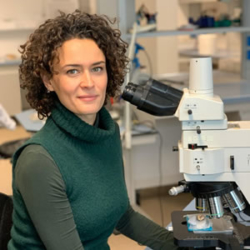
Flavia Venditti
Chipped Stone Tools; Use-wear analysis; Residues analysis; Experimental Archaeology
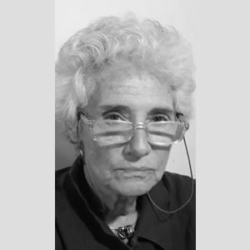
Stella Nunziante Cesaro
Infrared Spectroscopy

Davide D'Errico
Chipped Stone Tools; Use-wear analysis; Experimental Archaeology
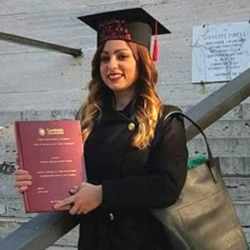
Martina Basile
Mobile Art; Technological Analysis; Experimental Archaeology
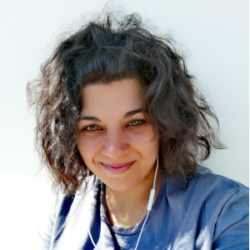
Pamela Ricci
Ceramic; Technological Analysis;
Flavia Venditti
Chipped Stone Tools; Use-wear analysis; Residues analysis; Experimental Archaeology
I am an archaeologist, expert in use-wear and residue analyses of lithic tools and currently a Postdoctoral Research Fellow at Tel Aviv University since October 2017.
My research interests focus on the technology and the reconstruction of the function of ancient stone tools during the Paleolithic for understanding the evolution of human behaviors. I am specialized on the adoption of experimental archaeology principles and the microscopic and chemical techniques for use-wear and residues investigation.
I started working in this field during my MA with a project focused on the analysis of a quartz lithic industry from the Middle Palaeolithic site of Coudoulous, France. Later, during the Master Course in Cultural Heritage, I carried out a methodological work on the identification and evaluation of mechanical wear traces on quartz assemblages, presenting the case study of the Sai Island, Sudan. My collaboration with “LTFAPA” developed in 2014 in the framework of the “MAECI and Accordi Internazionali Qesem Cave project”, when I moved my interest toward the Levantine Acheuleo-Yabrudian Cultural Complex. The Late Lower Palaeolithic Qesem Cave site (Israel) and the small recycled flakes production were the focus of my PhD research project. By means of experiments, use-wear and chemical investigation of residues I shed new light on a well-developed and planned technological and functional behaviour related to the recycling production.
I currently continue to collaborate with “LTFAPA” working on lithic materials from the Late Lower Palaeolithic sites of Jajulia and Revadim as Postdoctoral Fellow at the Tel Aviv University.
Pubblications
Venditti, F., 2019. Understanding Lithic Recycling at the Late Lower Palaeolithic Qesem Cave (Israel): A Functional and Chemical Investigation of Small Flakes. Oxford, Archaeopress Publishing.
Venditti, F., Agam, A., Barkai, R. 2019. Venditti, F., Agam, A., Barkai, R., 2019. Techno-functional analysis of small recycled flakes from Late Acheulian Revadim (Israel) demonstrates a link between morphology and function. Journal of Archaeological Science
Reports 28, 102039. https://doi.org/10.1016/j.jasrep.2019.102039.
Venditti, F., Nunziante-Cesaro, S., Parush, Y., Gopher, A., Barkai, R., 2019. Recycling for a purpose in the late Lower Paleolithic Levant: Use-wear and residue analyses of small sharp flint items indicate a planned and integrated subsistence behavior at Qesem Cave (Israel). Journal of Human Evolution 131, 109-128. https://doi.org/10.1016/j.jhevol.2019.03.016.
Venditti, F., Cristiani, E., Nunziante-Cesaro, S., Agam, A., Lemorini, C., Barkai, R., 2019. Animal residues found on tiny Lower Paleolithic tools reveal their use in butchery. Scientific Report 9:13031, 1–14. https://doi.org/10.1038/s41598-019-49650-8.
- fv1@mail.tau.ac.i
- Institute of Archaeology, Tel Aviv University - Tel Aviv, 69978, Israel

Stella Nunziante Cesaro
Infrared Spectroscopy
Infrared Spectroscopy
Senior Researcher, President of the Italian section of the Cultural Association “ Scientific Methodologies Applied to Cultural Heritage (SMATCH-Italy).
Graduated in Physics and Chemistry was researcher of the National Council of Research at the Department of Chemistry of the Sapienza University until 2009.
At present, she is president of the Italian Section of the Cultural Association “ Scientific Methodologies Applied to Cultural Heritage (www. smatch-international.com)” having a cooperation agreement with the Department of Classics of the ‘Sapienza’ University in Rome (Italy). In this frame she applies the Fourier Transform InfraRed Spectroscopy (FT-IR ), a non invasive and non destructive technique, in order to ascertain the presence of micro residues on archaeological artifacts, mainly lithic tools, and to characterize their nature. The data obtained are always compared to use wear and elemental analysis results.
Publications
V. Forte, S. Nunziante Cesaro and L. Medeghini
Cooking traces on Copper Age pottery from central Italy: An integrated approach comprising use wear analysis, spectroscopic analysis and experimental archaeology.
J. of Archaeological Science. Reports 18 (2018) 121-138
Flavia Venditti, Stella Nunziante-Cesaro, Yoni Parush, Avi Gopher, Ran Barkai
Recycling for a purpose in the late Lower Paleolithic Levant: Use-wear and residue analyses of small sharp flint items indicate a planned and integrated subsistence behavior at Qesem Cave (Israel).
Journal of Human Evolution 131(2019) 109-123
Flavia Venditti, Emanuela Cristiani, Stella Nunziante-Cesaro, Aviad Agam, Cristina Lemorini & Ran Barkai
Animal residues found on tiny Lower Paleolithic tools reveal their use in butchery
Scientific Reports | (2019) 9:13031 | https://doi.org/10.1038/s41598-019-49650-8
A. Nucara, S. Nunziante Cesaro, F. Venditti, C. Lemorini
A multivariate analysis for enhancing the interpretation of infrared spectra of plant residues on lithic artefacts
J. Archeological Science: Reports 33, October 2020, 102526
- snunziantecesaro@gmail.com

Davide D'Errico
Chipped Stone Tools; Use-wear analysis; Experimental Archaeology
PhD student at Leiden University with a project related to theuse wear analysis on stone tools of Arslantepe (Turkey) and Tell Leilan (Syria)
Bachelor's Degree in Palethnology 2008, Master Degree in Experimental Archaeology 201.
From 2012 to 2015 I participated in the excavation campaigns in Çatal Hüyük and Arslantepe (Turkey) as Use wear analyst.
In 2016 and 2017 I participated in the study of lithic materials of Portonovo (Italy)
I specialized in use wear analysis on tools used to cutting cereals, especially in Late Chalcolithic / Early Bronze age contexts, with particular attention to the definition of a study method to distinguish polishing due to different types of cereals.
Participation in the study of lithic materials of Esanatoglia (Italy)
Pubblications
D’Errico D., “Analisi degli oggetti in litica scheggiata” in “Il fuoco e la memoria. I forni neolitici di Portonovo” a cura di Cecilia Conati Barbaro. Millenni studi di archeologia preistorica. Museo e istituto fiorentino di preistoria “Paolo Graziosi”: 154-160. 2019
D’Errico D., “Use wear analysis on chipped stone tools” in “Abu Tbeirah Excavations I. Area 1 Last Phase and Building A -Phase 1” a cura di Licia Romano e Franco D’Agostino. University press: 455-462. 2019
D’Errico D., New perspectives for recognizing use wear from cereals, Journal of Archaeological Science: Reports, Volume 13, Pages 199-210, ISSN 2352-409X, https://doi.org/10.1016/j.jasrep.2017.03.043. 2017
Lemorini C., D'Errico D., Çatalhöyük Archive Reports 2013, 2014, 2015; http://www.catalhoyuk.com/archive_reports/
Lemorini C., D’Errico D., De Angelis A., Produce for whom? Specialized productions and their role in a Neolithic society and a Final Cacolithic-EBA society: Catalhöyük (Central Anatolia) and Arslantepe (Est Anatolia) in comparison. Atti del XVIII convegno mondiale UISPP – Parigi 4-9 Giugno 2018. In pubblicazione.
D’Errico D., "Glossy tools: innovation in the method of interpretation of use-wear produced by plant processing” in Proceedings of the International Conference on Use-Wear analysis, Use-Wear 2012, Cambridge: Cambridge Publishing Scholars: 24-35. 2014
- Leiden University, Leida - The Netherlands

Martina Basile
Mobile Art; Technological Analysis; Experimental Archaeology
Graduated in 2011 at the University of Naples “Federico II” with a thesis titled “Lightning stones: history and study of an ancient superstition”, concerning the study of Neolithic arrowheads used as fertility amulets since the Roman age.
In 2014 she obtained a master degree in Experimental Archaeology at “La Sapienza” University of Rome under the supervision of professors Cristina Lemorini and Daniela Zampetti, with a thesis focused on the experimental study of the Parabita Venus (Taranto, Apulia), bone figurines dated to the Gravettian period, acquiring the operative chain that led to their realization.
In 2017 she graduated scuola di specializzazione at “La Sapienza” University of Rome in Economy and Management of Cultural Heritage with a thesis titled: “Little-Authors: the museum guide written by children”, supervised by professor Paolo Serafini, about the compilation/realisation of the best paper guide for an archaeological museum, through a psychological approach.
Currently she is a PhD candidate at the Univesitat de Valencia (Spain) with a joint research in collaboration with “La Sapienza” University of Rome, focused on the multidisciplinary study of the post-Paleolithic art of the Valencian community area that integrates experimental archaeology, traces analysis and 3D technology.
Publications
- Taphonomic processes inconsistent with indigenous Mesolithic acculturation during the transition to the Neolithic in the Western Mediterranean, Salvador Pardo-Gordó, Oreto García Puchol Agustin Diez Castillo, Sarah B. Mcclure.; Joaquim Juan Cabanilles, Manuel Pérez Ripoll, Lluis Molina Balaguer, Joan Bernabeu Aubán, Josep LI Pascual Benito, Douglas J. Kennett, Alfredo Cortell Nicolau, Nefeli Tsante, Martina Basile ,Quaternary International, 2018, Vol. 483, p. 136-147.
- L'Archeologia Sperimentale come metodo di indagine per lo studio delle Veneri del Paleolitico Superiore, Saguntum (P.L.A.V) 48, 2016.
- Propuesta de analisis tridimensional aplicado a la integración de las diferentes actuaciones arqueológicas realizadas en Cueva de la Cocina (Dos aguas, Valencia), Agustin Diez Castillo, Oreto Garcia Puchol, Martina Basile, Alfredo Cortell Nicolau, Nefeli Tsa, Proceedings of the 8th International Congress on Archaeology, Computer Graphics, Cultural Heritage and Innovation 'ARQUEOL'GICA 2.0' in Valencia (Spain), Sept. 5 – 7, 2016.
- Univesitat de Valencia, Spain

Pamela Ricci
Ceramic; Technological Analysis;
PhD in the archaeology department with a major in classical studies.
My job concern the study of Vesuvian contexts, in particular Pompeii with attention to the production system of ancient textile through the analysis and experimentation of the instruments used.
The three-year thesis focused on the study of the house of Minucii in Pompeii, called domus-textrina for the presence of various certificates related to the processing of fabrics.
During my Master’s degree I deepened the theme of weaving analyzing all the contexts of Pompeii that led to the presence of weavers and spinners starting from the cataloguing of about 3500 textilia instruments: clay loom weights , spindle whorl and spindle in bone and lead weights found in the city of Pompeii.
In 2018 I won my PhD - currently in progress - with a project entitled "Textile culture in Pompeii: materials and contexts" which is part of a larger project directed by Prof. M. Galli (Sapienza University of Rome) on the study of all the evidence related to the processing of tissues in the Vesuvian area. The research work aims to understand the phases of textile processing with their contexts of interest.
The most interesting part concerns the study of weaving materials through experimental archaeology. In particular, we are investigating, from an experimental point of view, the clay loom weights for the understanding of the traces of use and technology present on the objects found in Pompeii.
A preliminary report was presented in October 2019 in Granada (Spain) on the occasion of the important specific conference on the theme of ancient weaving called Purpurae Vestas with a poster that shows the results achieved until then. In detail, the interesting context of the house of Polybius in Pompeii was presented.
A lesson entitled: "Textile culture in Pompeii: documentation and archaeological experimentation on tools for spinning and weaving" was presented in November 2020 at the Department of Cultural Heritage: archaeology, art history, the cinema and music of the University of Padua.
- pamela.ricci@uniroma1.it
- Sapienza Unversity of Rome, Italy

Guests
image
name
designation
Short Description
Social Links
Université Paris X, Nanterre (France)
Universidad del País Vasco (UPV/EHU) (Spain)
Universidad de Burgos (Spain)
Newcastle University (UK)
